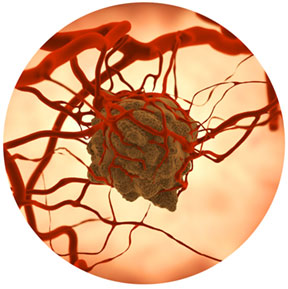By Boyd W. Haynes III, MD
About once a month, I will see a patient in the office who presents with complaints of pain, swelling and stiffness in a limb or joint without report of a trauma. The patient may report a fever, night sweats or loss of weight. Sometimes, patients will just report some soreness in a limb, but mostly an overall sense of feeling unwell. As part of my routine orthopaedic work-up, I order diagnostic imaging of the painful area so that I can ascertain if the patient has a fracture, arthritis or some other boney malformation causing the discomfort. Upon review of the images, I locate what I suspect to be the cause of the problem – a bone tumor. The ensuing discussion with the patient will be difficult as they will be totally unprepared for the news that this tumor could be cancerous. For purposes of this article, I will focus on the treatment of primary bone tumors and not metastatic bone tumors.
 After biopsy by an Oncologist and confirmation that the tumor is indeed malignant, I may see the patient back at a later date for surgery. Based on the treatment plan developed for the patient by the Oncology team, I may be called upon to remove all or part of the primary bone tumor. Depending upon the location, depth and size of the tumor, stabilization and strengthening of the bone with bone grafts, synthetic bone, rods and or plates may be required. If the tumor is in a joint, I will perform arthroplasty and replace the affected joint with a prosthesis where appropriate. This may occur before or after radiation therapy and/or chemotherapy.
After biopsy by an Oncologist and confirmation that the tumor is indeed malignant, I may see the patient back at a later date for surgery. Based on the treatment plan developed for the patient by the Oncology team, I may be called upon to remove all or part of the primary bone tumor. Depending upon the location, depth and size of the tumor, stabilization and strengthening of the bone with bone grafts, synthetic bone, rods and or plates may be required. If the tumor is in a joint, I will perform arthroplasty and replace the affected joint with a prosthesis where appropriate. This may occur before or after radiation therapy and/or chemotherapy.
Limb salvage techniques are always used, regardless of the long-term prognosis of the patient. I work very carefully to retain whatever musculoskeletal structure I can to preserve patient wholeness. An intact self-image is very important to healing from cancer, long-term rehabilitation efforts and a return to a normal life for the patient.
Amputation is absolutely avoided unless the tumor is extremely large, involves a major blood supply or there is no means of successfully salvaging the limb. Thankfully, the development of technologically-advanced prosthetic devices offer the promise of great utility and mobility to amputees that were unavailable even a few years ago. Physical and Occupational Therapy will play a vital role in returning the post-operative bone tumor patient to activities of daily living, to work and full-function, whenever possible.
Late-developing complications from this surgery are bone graft non-union, contractures, limb length discrepancies and loosening of implanted prosthetics, all of which are rare. Patients who have primary bone cancer removal surgery will need to follow up with their Orthopaedic Surgeon or Oncologist yearly for life and will need x-rays annually to confirm that their bone stabilization remains solid and no X-ray evidence of tumor return. These patients will also require antibiotic prophyllaxis before dental cleaning or other minor medical procedures.
 Dr. Boyd Haynes is a Fellowship-trained, Board- Certified Orthopaedic Specialist who currently practices at Orthopaedic and Spine Center in Newport News, VA. Dr. Haynes has a fellowship in Sports Medicine and specializes in total joint replacement and endoscopic carpal tunnel repair. For more information on Dr. Haynes or OSC, please go to www.osc-ortho.com.
Dr. Boyd Haynes is a Fellowship-trained, Board- Certified Orthopaedic Specialist who currently practices at Orthopaedic and Spine Center in Newport News, VA. Dr. Haynes has a fellowship in Sports Medicine and specializes in total joint replacement and endoscopic carpal tunnel repair. For more information on Dr. Haynes or OSC, please go to www.osc-ortho.com.

